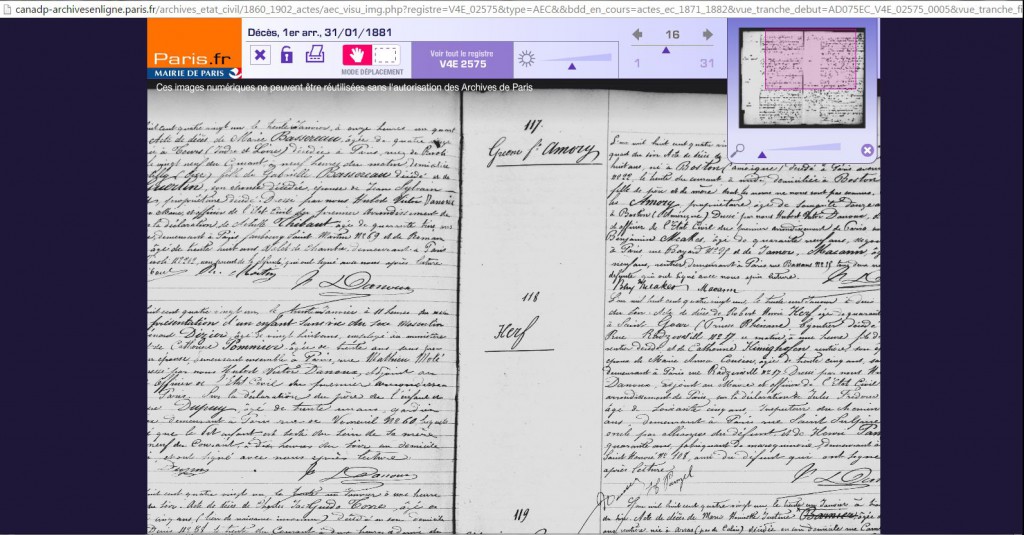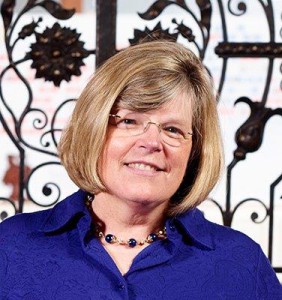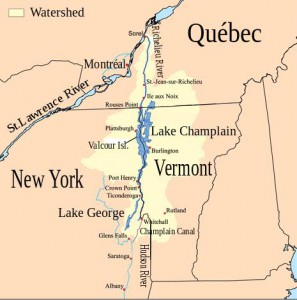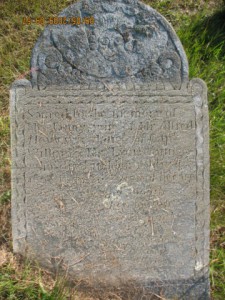 The name Martha Babcock Greene Amory might not immediately resonate, but the lives of her immediate forebears are well-known to us today. She was born in Boston 15 November 1812, the daughter of Gardiner Greene and his third wife, Elizabeth Clarke Copley. Mrs. Greene was the daughter of John Singleton Copley, the well-known American painter, and his wife Susannah Farnum Clarke; she was the granddaughter of Richard Clarke, whose consignment of tea was thrown into the harbor during the Boston Tea Party. That’s a lot of history for just a couple of generations! Continue reading The lady vanishes
The name Martha Babcock Greene Amory might not immediately resonate, but the lives of her immediate forebears are well-known to us today. She was born in Boston 15 November 1812, the daughter of Gardiner Greene and his third wife, Elizabeth Clarke Copley. Mrs. Greene was the daughter of John Singleton Copley, the well-known American painter, and his wife Susannah Farnum Clarke; she was the granddaughter of Richard Clarke, whose consignment of tea was thrown into the harbor during the Boston Tea Party. That’s a lot of history for just a couple of generations! Continue reading The lady vanishes
Tag Archives: Research tips
ICYMI: Planning an ancestral trip
[Editor’s note: This post originally appeared in Vita Brevis on 7 October 2014.]
 Last week, I was happily recalling my 2012 trip to Finland, specifically a visit to my ancestral village, Teuva. I had the great good luck to meet cousins there and see the land that my ancestors farmed – and even the foundation of the tiny house where my grandmother grew up.
Last week, I was happily recalling my 2012 trip to Finland, specifically a visit to my ancestral village, Teuva. I had the great good luck to meet cousins there and see the land that my ancestors farmed – and even the foundation of the tiny house where my grandmother grew up.
When first planning that trip, I had no idea how to proceed. I could look at a map and find Teuva – and the nearest train station with a rental car facility – but I had no idea how to go about identifying living relatives. Continue reading ICYMI: Planning an ancestral trip
Spring potholes
 Spring is pothole repair time in New England, and as I write this on April 4 southern New England is receiving up to 8 inches of snow with flash freezing predicted overnight, so there will be plenty of work this spring.
Spring is pothole repair time in New England, and as I write this on April 4 southern New England is receiving up to 8 inches of snow with flash freezing predicted overnight, so there will be plenty of work this spring.
A pothole that has been bugging me this winter is remembering exactly which citations I have proofed and which are yet to be done. I already use the color “highlighter” function in Word – yellow to indicate questions that need answering and green to indicate “This is the right date/name/fact despite what some other sources say,” etc. – but I’m now adding light grey highlights for footnote citations that have been proofed. Continue reading Spring potholes
The name DID change

You’ve probably heard the story: “My ancestor’s name was changed at Ellis Island!” But you also probably know that this is a myth; immigration officials at Ellis Island did not randomly alter incoming passengers’ names. However, the surnames and given names of one group of immigrants, French-Canadians, frequently did change when our ancestors crossed the border.
Throughout the centuries, migration from Quebec was driven by poor agricultural conditions, overpopulation, and inadequate employment opportunities. Continue reading The name DID change
Probate records: Part Seven
[Editor’s note: Alicia’s probate series began here.]
Guardians were appointed for children under the age of 21 and for adults who were not able to handle their own affairs. Children over age 14 could choose their guardians. The surviving parent would usually be the first choice, but a guardian could also be a grandparent, older sibling, uncle, step-parent, etc.
In our example from the estate of Joseph Alden of Middleborough, there were no minor children, but Joseph was the administrator of his son Ebenezer’s estate.[1] When Ebenezer died in 1773 at the age of 30, he left behind six minor children: Hannah, age 8; Orpha, 7; Polly, 6; Ruth, 5; Ebenezer, six months; and Joseph, “on the way.” Continue reading Probate records: Part Seven
Gravestone photos versus transcriptions

A practice I had utilized in a prior post, regarding New York state deaths appearing in Connecticut sources, has turned up in a new context. In the prior case, someone from Connecticut had died in New York, and her detailed death was recorded in a Connecticut newspaper, while no civil record of death was recorded locally, which is not surprising for New York State.
In this new case, I am working on an article for Mayflower Descendant on the Young family of Windham, Connecticut, which has descents from Mayflower passengers John Howland and Richard Warren. Several descendants are buried in Windham Center Cemetery, which has led to a few interesting scenarios in terms of finding information from gravestones. I’ll describe three below: Continue reading Gravestone photos versus transcriptions
Irregular border marriages in Scotland

Not long ago, I was searching for a record of an 1830s marriage between two prominent Scottish families. I was certain I would have an easy time locating this particular record, having identified the parish and county in which the couple were married, so I began my search. Yet while I searched several sources, including Given Name Index to Marriages in Old Parochial Registers to 1855,[1] and Scotland Marriages, 1561-1910, I found no record of the marriage. I attempted the search again using every variation of the surname I could think of, but struck out. I then turned to published genealogies regarding the two families, but found no mention of this particular couple’s marriage. Continue reading Irregular border marriages in Scotland
Making the skeletons dance

In his 1930 novel Immaturity, George Bernard Shaw wrote, “If you cannot get rid of the family skeleton, you may as well make it dance.” Shaw had a point with that statement. While we can deny them, hide them, or ignore them, we can’t remove the family skeletons from their places in our family trees. Once they’re “out of the closet,” those dry bones will walk around; what we make of them is up to us.
Scott C. Steward’s recent reposting of his article Genealogical Complexities brought to my mind the dilemma of all family history: how much do we really want to know, and what responsibility do we have in dispensing that information? Continue reading Making the skeletons dance
A growing family

We pick up the Bouchers in 1912 with Mrs. Frances Boucher[1] and her sons Carlos H., clerk, and Emile G., “2d vice pres. Crook-Horner Supply Co.,” at 1718 Linden Avenue in Baltimore, along with Mrs. Boucher’s grandson Harry P. Stone, clerk.[2] Thomas J. Wentworth, now a member of the Melbourne Advertising Agency with an office at 210 East Lexington Street, is back at 1731 Linden Avenue.[3] Edward H. Glidden appears as a member of Glidden & Friz, architects (in the Glenn Building, 16 St. Paul Street), and the treasurer of the Maryland Apartment House Company; he has already moved into the Glidden & Friz-designed Homewood Apartments on North Charles Street.[4] As in 1910, Claude Burch is at 804 North Calvert Street.[5]
In 1913, Edgar L. Brooks (who married Josephine Boucher Stone in that year) is listed as secretary of the Baltimore Chemical Company at Seventh Street, east corner of Gough; Julien P. Friez, instrument maker and the father of Lucien Louis Friez, was living at 1230 East Baltimore Street.[6] Edward H. Glidden and Clyde N. Friz now had their office on the twelfth floor of the Maryland Casualty Building.[7] Continue reading A growing family
Chasing a squirrel
 A squirrel![1] I find a lot of them while researching and I am sure all other researchers find them, too: those pieces of information that have nothing to do with what you are researching. You come across them by accident and they pull your attention away from what you are trying to find because they are equally or sometimes more interesting. Sometimes it is a quick tangent – and sometimes squirrels can lead to an entirely new path of research that sticks with you for a long time. Continue reading Chasing a squirrel
A squirrel![1] I find a lot of them while researching and I am sure all other researchers find them, too: those pieces of information that have nothing to do with what you are researching. You come across them by accident and they pull your attention away from what you are trying to find because they are equally or sometimes more interesting. Sometimes it is a quick tangent – and sometimes squirrels can lead to an entirely new path of research that sticks with you for a long time. Continue reading Chasing a squirrel
